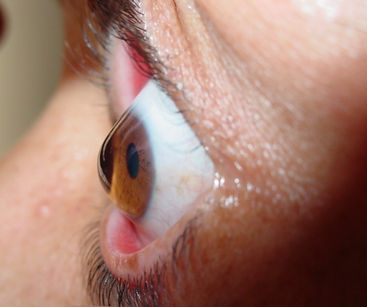
In our specialized center we treat all ocular pathologies, since we have specialists in all subspecialties of modern ophthalmology.
Cataracts: Cataract is total or partial opacification of the lens. Opacifying causes light to disperse into the eye and cannot be focused on the retina, creating diffuse images.
It is the most common cause of blindness treatable with surgery. It has several causes but it is attributed mainly to the age although there are also many other causes.
...Go to brochure for more information
Glaucoma: Glaucoma is a disease of the eye that damages vision gradually. It usually has no symptoms and can result in sudden loss of vision.
Glaucoma is generally characterized by the pathological increase of intraocular pressure, due to the lack of drainage of the aqueous humor and its common end condition is an optic neuropathy characterized by the progressive loss of nerve fibers of the optic nerve, leading to blindness.
...Go to brochure for more information
Strabismus: Strabismus is the deviation of the alignment of one eye relative to the other, preventing bifoveolar fixation.
This prevents you from fixing both eyes at the same point in the space, which causes an incorrect binocular vision that can adversely affect the perception of depth.
...Go to brochure for more information
Pterygium (Nail): The conjunctiva invades the cornea, is a tip of conjunctival tissue that advances and grows from the outer part of the cornea towards the center.
They are cells and blood vessels from the conjunctiva that are introduced, invade and placed in front of the cornea, and can obstruct the vision if it reaches the pupil.
Eyelid Ptosis: Eyelid ptosis, also called blepharoptosis or ptosis of the eyelid, is a permanent lowering of the upper eyelid. It can be total or partial, depending on whether or not the vision is prevented.
This symptom can be caused by a palpebral damage (the word "blepharoptosis" is used) or by a nerve damage of the third pair or the nerve centers of the brain (in this case, the word ptosis is often used).
...Go to brochure for more information
Keratoconus: An eye disease that affects the structure of the cornea, the transparent tissue that covers the front of the eye.
The shape of the cornea slowly changes from the normal round shape to a conical shape. Then when the light enters the eye through the cornea, it does not focus light rays correctly causing visual problems.
...Go to brochure for more information
Stye: A stye often appears as an irritated protrusion near the edge of the eyelid, caused by the infected follicle of an eyelash.
It is important not to tighten or try to remove a stye or chalazion.
...Go to brochure for more information
Dermatocalasia: It is a process associated with the aging or pseudoherniation of fat bags characterized by the sagging of the upper eyelid skin, resulting in a redundancy of the same that can reach the edge of the eyelashes.
It is caused by the loss of elasticity and stretching of the upper eyelid skin that occurs with age.
...Go to brochure for more information
Retinal detachment: It is the separation of the light-sensitive membrane (retina) at the back of the eye of its support layers.
The retina is the tissue in the back of the eye that helps you see the images focused on it by the cornea and lens.
When retinal detachment occurs, bleeding from nearby blood vessels can cause opacity inside the eye, so you may not see clearly or not see at all. The central vision can be seriously affected if the macula, the part of the retina responsible for fine and detailed vision, is detached.
...Go to brochure for more information




Wrinkles, Pleats and Paws of Hens: Wrinkles appear as a result of the aging process. They are formed as a consequence of: decreased collagen, genetic factors, facial expressions, deterioration caused by the sun, poor hydration or smoking.
To treat them, Botox is implemented, which acts by relaxing that muscle with a localized and natural action, preventing the formation of wrinkles. The therapeutic effect of Botox varies in each patient, being in average of 6 to 8 months.










Visual Alterations
Myopia: This is an optical problem that prevents sharp objects from being seen clearly. It is because the myopic eye has an axial length greater than normal and / or a more curved cornea than normal. Then the rays that enter the eye, make focus in front of the retina producing a blurred vision of the distant objects. These people can see close objects well, but they need graduated lenses.
...Go to brochure for more information


Hyperopia: An optic problem opposite myopia, in which the patient's eye has an axial length less than normal and / or a very flat cornea. For this reason the rays focus behind the retina, causing nearby objects to be distorted, while distant objects are normally seen. In order to be able to see clearly these people must wear positive graduated lenses.
...Go to brochure for more information
Astigmatism: It is the optical problem caused by an uneven curvature in the cornea or lens, with a more curved meridian and a flatter meridian. When parallel rays enter the eye, they focus more than one position, causing distorted and blurred images. To improve Astigmatism, cylindrical lenses are prescribed with their axis oriented 90 ° from the meridian to be corrected.

Normal
Pterigium (Uña)

Antes
Después
Chalazion: A chalazion is formed when a sebaceous gland in the eyelid called Meibomian gland becomes enlarged and the opening of the gland is obstructed due to fat.
...Go to brochure for more information
Pathologies
